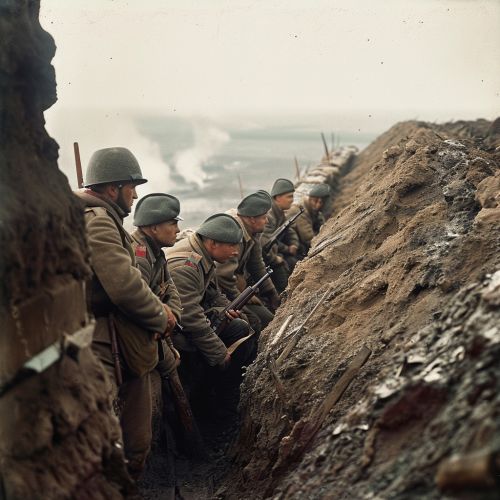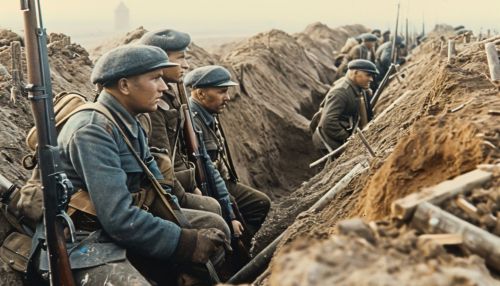Eastern Front (World War I)
Background
The Eastern Front during World War I was a theatre of conflict between the Central Powers, represented by the German, Austro-Hungarian, and Ottoman Empires, and the Entente Powers, primarily the Russian Empire. The front extended from the Baltic to the Black Sea, encompassing modern-day Poland, Ukraine, Belarus, and the Baltic countries.


Prelude to War
The Eastern Front was shaped by the political and military strategies of the major powers involved. The Schlieffen Plan, developed by the German General Staff, aimed to avoid a two-front war by rapidly defeating the French in the west before turning to face the slower-mobilizing Russians in the east. However, the plan was not executed as intended, leading to a protracted conflict on both fronts.
Initial Operations
The Eastern Front saw the first major operations of the war with the Battle of Tannenberg and the Battle of the Masurian Lakes, both in 1914. These battles resulted in significant German victories against the Russian Second Army, under the command of General Alexander Samsonov, and the Russian First Army, led by General Paul von Rennenkampf.
Stalemate and Attrition
By 1915, the Eastern Front had settled into a war of attrition, similar to the Western Front. The Central Powers launched successful offensives at the Gorlice–Tarnów Offensive and the Great Retreat, pushing the Russian forces back. However, the vast distances and logistical difficulties of the Eastern Front prevented a decisive victory.
Brusilov Offensive and Russian Revolution
In 1916, the Russian General Aleksei Brusilov launched the Brusilov Offensive, which initially achieved significant gains against the Austro-Hungarian forces. However, the offensive eventually stalled due to logistical difficulties and the arrival of German reinforcements. The failure of the Brusilov Offensive and the ongoing hardships of war contributed to the outbreak of the Russian Revolution in 1917.
End of the Eastern Front
Following the Russian Revolution, the new Bolshevik government sought to end Russia's involvement in the war. The Treaty of Brest-Litovsk, signed in March 1918, formally ended the war on the Eastern Front, allowing the Central Powers to focus their efforts on the Western Front. However, the end of the Eastern Front did not bring peace to the region, as the Russian Civil War and various border conflicts continued for several years.
Impact and Legacy
The Eastern Front had a profound impact on the course of World War I and the subsequent history of the 20th century. It saw the collapse of the Russian, German, and Austro-Hungarian Empires, and the redrawing of borders in Eastern Europe. The harsh conditions and brutal warfare on the Eastern Front also contributed to the radicalization of soldiers and civilians, setting the stage for the rise of totalitarian regimes in the interwar period.
